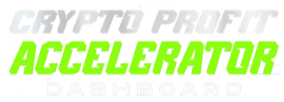Tether has unveiled USAT, a new stablecoin product for the US market, according to a Sept. 12 statement.
Alongside the announcement, the company confirmed that Bo Hines will become the CEO-designate for the USAT stablecoin.
Hines described his appointment as an opportunity to reinforce America’s influence in global finance by launching a stablecoin rooted in transparency and compliance.
What is Tether’s USAT?
Tether explained that USAT differs from its flagship USDT stablecoin as it is focused on complying with US law, particularly the recently enacted GENIUS Act, which sets standards for stablecoin issuance.
The firm continued that the token is a digital-dollar alternative built for American businesses and institutions.
According to Tether, the new stablecoin will be issued through Anchorage Digital, the first federally chartered crypto bank, to ensure compliance from day one. It will operate on Hadron by Tether, the company’s tokenization platform, and its reserves will be managed by Cantor Fitzgerald, which will serve both as custodian and primary dealer.
Tether said its partnerships with these firms aim to address the long-standing criticisms about its operations’ opacity. It further argues that this model creates a fully regulated framework for digital dollars while offering businesses a compliant alternative to cash and traditional payment systems.


Don’t Get Left Holding the Bag
Join The Crypto Investor Blueprint — 5 days of pro-level strategies to turbocharge your portfolio.
Brought to you by CryptoSlate
Tether CEO Paolo Ardoino said:
“Tether is already one of the largest holders of U.S. Treasuries because we believe deeply in the enduring power of the dollar. USAT is our commitment to ensuring that the dollar not only remains dominant in the digital age, but thrives – through products that are more transparent, more resilient, more accessible, and more unstoppable than ever before.”
Increased competition
Tether’s decision to roll out USAT comes as its flagship USDT faces the stiffest competition in years.
Data from DeFiLlama shows that USDT’s market share has slipped to 58%, its lowest level in two years, even though the token still commands a market capitalization of about $169 billion.
That decline reflects the rise of new challengers in the highly competitive market.
Traditional financial heavyweights such as Bank of America are testing stablecoin strategies, while crypto-native players like Ripple and MetaMask have expanded into the sector with their own products.
The influx of both Wall Street institutions and Web3 firms has created more user options and intensified pressure on incumbents. Tether aims to reinforce its market leadership against this backdrop.

